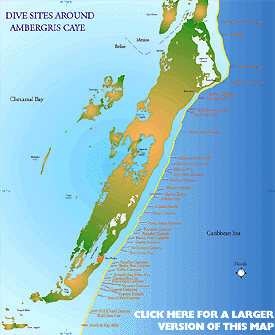
Dive and Snorkeling Sites off Ambergris Caye, BelizeAlong the entire length of Ambergris Caye the reef is comprised of spectacular three dimensional coral formations which include canyons, grottoes and tunnels. Curiously, the more common reef fishes do not appear here in great numbers compared to elsewhere. However, there are a greater number of pelagic fish such as sharks and rays. There are also a considerable number of porpoise and turtle to be seen.Click here for a map of dive sites in the immediate area of the island. CLICK HERE for our map area! Complete with thumbnail images of the maps... Ambergris is the largest and most popular of the offshore cayes, with 25 miles of Belize's spectacular barrier reef sitting less than a mile offshore. The calm waters are full of dense coral and lush reef growth with visibility up to 150 ft. Dive operators making trips to the barrier reef off Ambergris Caye select sites that combine good diving with variety. Spur-and-groove reefs with deep canyons, swim-throughs, and reef cuts are popular and teeming with abundant and colorful life. Thanks to the installation of permanent mooring buoys and natural resource management initiatives such as the Hol Chan Marine Reserve, the reefs remain protected from anchor damage.
Out here are more dive sites one can count and a never ending beauty of fish life, coral variety and interesting underwater landscapes to view. Typical for the barrier reef are the canyons that stretch out from west to east and sometimes create tempting swim-throughs and caverns. Depth ranges on the barrier are between 50 and 200 feet of water. At it's deepest, the wall starts and drops to a few hundred feet.
If one is lucky and dives to the right time this barrier reef is known for sightings of all kinds of large creatures as well. The Reef shark and Nurse Shark are occasional visitors as well as the Whale Shark and the Loggerhead Turtle. Also Manta Rays and larger species of sharks are known to visit these waters.
Belize Dive Maps:
...so you see, not much variation. The most common question after the general water temperature is what is the temp. in the Blue Hole at 130ft.....about 76f with hardly any change throughout the year at that depth. Inside the reef, the water is shallow and sandy. The busy surface traffic makes snorkeling both impractical and dangerous. However, once you reach the reef it fills your vision: shallow, well-lit water with a myriad of corals and fishes in bright iridescent colors. Just to the north of Reef Point are Conch Flats, large sandy areas inside the reef covered in sea grass-not ideal for diving as it soon becomes boring. Sea grass is, however the staple diet of both the conch and the turtle, and is therefore an important part of the ecosystem. For the game fisherman, this is a spot to catch wahoo, a large silver fish which puts up a good fight. It is also a good fish for eating. These fish are rarely seen by divers. On the seaward side of the reef, the coral drops down to a ledge which, in places, can be up to half a mile (.8 km) wide before it drops off into the deep blue waters of the Caribbean. Here pelagics abound. Although they are predominantly solitary creatures, as many as five whale sharks, all 25-30 feet (8-9 m) long have been seen together here. They were most likely feeding on the plankton which was being blown offshore by the prevailing wind at the time they were sighted.
The reef immediately east of San Pedro, the main town on Ambergris Caye, is
well known for its great variety of coral. Tuffy Cut is a prime example of
this. Staghorn, elkhorn, brain and lettuce coral are all here in abundance,
as are gorgonian sea fans of pale green, deep purple and red that add to
the riot of colors and shapes.
Zone A includes the reef and is covered with almost every type of coral found in the Caribbean. Zone B is an area of sea grass where turtle, conch and even the remarkable little sea horse are found. Zone C comprises the mangroves. Click Here for extensive information on Hol Chan
South of Ambergris Caye the reefs which break the surface take their names
from nearby cayes, The mainland is now 13 to 14 miles (21-23 km) to the
west, and in between is a vast area of shallow water with numerous cayes of
sand and mangroves.
Looking seaward from the reef, divers will likely see pelagics such as jacks, tarpon and snook. Manta rays are often spotted cruising by. There are always barracuda, which in spite of their fearsome appearance, are essentially benign and merely curious of divers.
Beyond a depth of about 100 feet (30 m) is big grouper country. Large
tiger, red and Nassau grouper occupy almost every crevice that can
accommodate them. Jewfish of massive proportions lurk here, and prime
specimens of hind, coney and snapper stare back at you as if to question
your right to venture into their territory.
Immediately inside the reef are shallow patch corals which are superb
for snorkeling. The most common corals here are staghorn, elkhorn and
brain. A rainbow variety of smaller fishes abound. The terrain on the
seaward side of the reef varies considerably. To begin with, there are the
shallow corals at or near the surface. Along this area there
are large patches of sand where the diver
may see large stingrays digging in to lie in wait for unsuspecting prey.
These patches are interspersed with coral outcrops, topped with gorgonians
and sea fans. Manta ray are also occasionally seen
here, and there are lobster. The size and varieties of individual
coral configurations are truly memorable. Gigantic and well-formed, they
remain virtually the same as we move farther south along the reef and off
the beaten path. Caye Chapel Cut is a navigable entrance through Chapel Reef, but it should only be attempted by those familiar with its hazards. By comparison, Long Caye Channel is a much larger and safer channel between Chapel Reef and St. George's Reef. The northern one-third of St. George's Reef is known as the Ski Slopes on account of the spur and groove structures. The sandy slopes stretch down from the shallows all the way to the reef wall. This area is not particularly popular as the remainder of the reef is much more vibrant and colorful. Farther south along St. George's Reef is a spot called Turtle Leap where a diver has a 90 percent chance of seeing a turtle. The spur and groove formations have disappeared and are replaced with a rich variety of corals stretching from the reef crest to the drop-off. Thimble jellyfish spawn in May, for information on how to avoid them click here. SPECIFIC DIVE SITES:
TRES COCOS
If you want to keep your boat ride to a minimum and still dive a spectacular reef, Tres Cocos is for you. It only takes five minutes to get there out of San Pedro. The mooring buoy is a short distance beyond the protection of the reef, which can be helpful on rough days.
Tres Cocos offers a menagerie of marine life. Even without leaving the vicinity of the anchor line you can see more than 50 different kinds of fish, coral and other invertebrates. Here harlequin bass, trumpetfish, French grunts, dusky damselfish, porkfish, blue chromis, schoolmasters, stoplight parrotfish and squirrelfish commonly dart among the coral cover. Yellowtail snapper, gray angelfish, bar jacks, black durgeon and Atlantic spadefish patrol the waters just above the reefs or in the canyons. Lettuce, boulder, brain, pencil, blushing star, club finger, mustard hill and staghorn coral are only a partial list of the reef builders found here. Colorful sponges, delicate orange crinoids and branching anemones add to the list of marine life. Spanish for "three coconuts". Excellent visibility. You can almost always see all species of fish including jacks groupers, snappers, parrot fish, angel fish, barracuda, eels, spider crabs, and an occasional nurse shark. This is the spot where the sea turtles can be seen during mating season. Canyon formations start at 50 feet and down to 100 feet.
TACKLE BOX CANYONS If you want photographs of divers in tunnel mouths or descending through gaps in cavern roofs, Tackle Box Canyons is your dive site. Named after the Tackle Box bar that used to be situated directly onshore (now Shark's Bar), this site features several deep, narrow canyons with vertical walls.
Marine life is generally sparse and unpredictable in the caves and tunnels. Lobsters regularly take advantage of the protective recesses and horse-eye jacks may gather in the upper reaches of partially roofed-over caverns. Another resident seen here is the nocturnal glassy sweeper. This small fish with oversize eyes typically congregates in the darkness found just inside small cave mouths.
While marine life is sporadic in the depths and shadows of these deep canyons, it is abundant on top of the coral ridges. Large plates of boulder coral, heads of brain, yellow pencil, mustard hill and isolated stands of elkhorn coral form the ridges. Excellent visibility. You can almost always see all species of fish including jacks, groupers, snappers, parrot fish, angel fish, barracuda eels, spider crabs, lobster, and nurse sharks. Large canyon formations and just a few minutes from the dive shop. Lots of marine activity during turtle season.
TUFFY
VICTORIA TUNNELS
CYPRESS CANYONS
Burgeoning coral growth on the spurs mushrooms next to the mooring pin to form undercuts. Just a little bit farther seaward, the pronounced lateral coral accretion of two ridges has created a low swim-through, which is straight and floored by coarse rippled sand.
Like so many other places along the barrier, there is a dazzling variety of shapes and colors present. Elkhorn, staghorn, lettuce and boulder coral create an abundance of branching, platy and mound shapes right around the mooring line. Huge overlapping sheets of coral shingle the reef top farther seaward. Striking iridescent vase sponges, red boring sponges, orange crinoids, green cornflake algae and a wide variety of tropical fish accent the reef with color. Excellent visibility. All species of fish including jacks, groupers, snappers. parrot fish, angel fish, barracuda, eels, spider crabs, lobster, and nurse sharks. Canyon formations and close to Hot Chan Marine Reserve. Unique to this site is the concentration of impressive orange and white elk horn coral. Schools of yellowtail, gray, black and red snappers swim among these beautiful coral formations. Because they are accustomed to being fed, they will come up very close to you. Cypress is a great spot for photographers who want to fill their wide angle lens with colorful schools of fish.
CORAL GARDENS
LOVE TUNNELS
HOL CHAN MARINE RESERVE / CUT Typical Depth Range:
20-30 ft (6-9 meters)
Hol Chan Cut, located just 4 miles southeast of San Pedro, is a fantastic shallow dive. No dive experience in Belize is complete without at least one visit.
Tidal currents funnel a steady supply of food to filter feeders such as gorgonians, seafans, sponges, schools of grunts and mutton snappers. Joining these plankton feeders are Nassau groupers, black groupers, Atlantic spadefish, cubera snappers and a huge congregation of schoolmasters. All make Hol Chan home now that they are protected from fishing. Hol Chan became the first national marine reserve in Central America when it was created in 1987. The name, Mayan for "little channel," describes the site formed by a natural break in the reef.
All flora and fauna within the reserve are protected, and feeding fish is discouraged. The Belize Tourism Industry Association suggests: "Do not stand, touch, or kick sand on coral reef systems. Enjoy the view without your hands. A safe distance of two feet will protect you and the reef." A multitude of holes riddle the channel walls, accommodating a large population of green and spotted eels. Dozens of eels can usually be seen at the openings of small caves. Eels naturally seek reef protection during the daylight, but feeding by local divemasters has trained them to be more aggressive and has prompted them to leave the shelter of the reef and look for meals during the day.
Eels are not the only animals that have responded to feeding. Large groupers are also eager and snorkelers may be quite surprised to find a 40-pound black grouper in just a few feet of water. Divers can still enjoy Hol Chan Cut even when the tide is running by staying close to the channel sides where irregularities in the walls and bottom dissipate much of the current's strength. Protruding coral ledges and large boulders create current shadows. If you get caught by the current, stay relaxed. Just remember to swim toward the channel walls to get out of the current most quickly. Caution is important and divers who are weak swimmers should probably experience this dive only during periods of slack tide. Click here for MUCH more information on Hol Chan HOL CHAN MARINE PARK NIGHT DIVE
ROCKY POINT
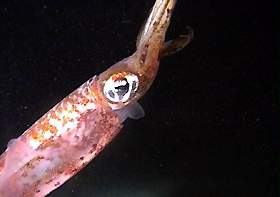 ROBLES POINT
ROBLES POINTAbout a 25-30 minute boat ride Inside the sheltered waters of the reef. Two tank dive: morning and afternoon. Excellent visibility. Marine life abounds with plenty of Nassau groupers, lobsters, and spider crabs. The brilliantly colored coral is pretty much untouched. Mostly canyon formations.
PUNTA AZUL / PALMERAS POINT
MEXICO ROCKS
Mexico Rocks Marine Reserve is a shallow patch reef complex located off the northern tip of Ambergris Caye, on the Belizean Barrier Reef. The site consists of approximately 100 Holocene patch reefs and is composed predominantly of boulder corals (Montastraea annularis). The reef has accumulated in shallow (about 2.5 to 5 meters) water over the last 420 years. The Montastraea annularis patch corals that dominate here are unique to Ambergris Caye's Northern Lagoon and a rare occurrence in Belize. The Marine Reserve is seen as an important addition to the caye's ecotourism attractions, being a popular snorkeling and shallow dive destination. The Mexico Rocks area is known for conch, banded shrimp, arrow crab, flounders, stingray, Nurse Sharks, yellow tail snappers, an assortment of butterfly fish, angelfish and friendly turtles. No trace of ship wrecks sometimes mentioned on the internet, probably rotted and washed away decades ago. There is a cave entrance but currently Tour Operators are only visiting the entrance without cave penetration. The Mexico Rocks Cave has been named 'Shark Hole' and is the daylight sleeping sanctuary for number of Spiny Lobster and Sharks. A 20-minute skiff ride north of San Pedro brings you to the well-known cluster of coral heads called Mexico Rocks. No mooring buoys mark this site, but all the locals know its location adjacent to the former coconut plantation named Mexico Cocal. Shallow and protected by the barrier reef from ocean swells, this site is great for snorkelers and divers. It's shallow enough so snorkelers can see without diving and divers can maximize their bottom time. "Rusty" divers will appreciate its benign conditions to refresh their skills before taking on the deeper sites of the barrier reef. With its shallow conditions and favorable light, photographers can concentrate on composition all day long.
Beautiful snorkeling area inside the reef and spectacular diving off the deep end on the other side of the reef. Excellent visibility with both dramatic canyon walls and caves through the coral formations. Plenty of marine life including horse-eye jacks, Nassau groupers, lobster, barracuda, spider crab and sand sharks. Two tank dives and snorkeling recommended. Giant Brain Coral formations which create miniature under sea habitats and islands for various corals and marine animals. Spinney Lobster, Yellow Tail, Sting Rays, all reachable in 10 - 15 feet of clear, warm water. Many patch reefs and abundance of juvenile marine life. A treacherous looking cave is also located there with hundreds of baby snappers looking out of its' mouth. BASIL JONES CANYONS Basil Jones is a spur-and-groove reef outside the last pass before the barrier meets the north end of Ambergris Caye. Located about 45 minutes north of San Pedro, this part of the barrier reef lies beyond the normal range of dive sites. It takes calm seas and special arrangements to reach Basil Jones Canyons because you can only get there by boat. Should you decide to do this dive, be prepared to start early, pay for the extra fuel and make a full day of it. Bring along lunch and extra tanks. A completely private sandy beach perfect for a picnic awaits you, and the lagoon behind the reef let's you spend your surface interval time snorkeling. The back reef is shallow and packed with attractions not seen elsewhere because the barrier at Basil Jones forms close to the island. Lens-shaped coral stacks and wide sand flats characterize the reef at Basil Jones, but it is the potential of seeing large pelagics that make it worth the effort to get there. Basil Jones lies beyond the normal reach of fishing boats creating a natural refuge for marine life. Many coral formations around the sand flats feature overhangs with ceilings that are 3-8 ft high. Lobsters are particularly fond of these recesses and they attract hungry Nassau and black groupers. Nurse sharks rest in the canyons, stingrays root through broad sand flats and turtle, jewfish, eagle and manta rays patrol the water above the reef.
Sandbar lies off the southern tip of Ambergris Caye and is one of the shallower barrier reef dives along the island. A mooring buoy line, anchored on top of a living coral ridge, guides divers down to the reef top at 54 ft. The adjacent sand channel floor to the south descends 17 ft below the top of the reef. There, next to the mooring pin, you will find a coral formation in the center of the channel. From the base of the channel, it looks like a tall chimney but it is actually the beginning of another coral ridge that divides the channel into two narrow canyons. Following the narrow canyons seaward will quickly take you to the reef edge. Along the way, relief between the canyon floor and the top of coral ridges doubles from that found at the mooring pin. The floor of the channel here is about 90 ft. Coral growth is lush and varied on the ridges. Platy growths of boulder, brain and mustard hill coral are everywhere. Staghorn coral, a rare occurrence elsewhere on the barrier, forms in thickets. A colorful variety of other stony coral forms a loose framework that supports a multitude of protective holes for fish and invertebrates. All the tropicals--wrasses, parrotfish, angelfish, grunts, sergeant majors and many others can be found here, but their numbers seem few against the impressive coral ridges. Many more crinoids, crab, shrimp, brittle starfish, basket starfish and other small invertebrates hide among the coral. Photographers will find plenty of opportunity to shoot macro or wide angle. A cluster of big barrel sponges in 60-90 ft of water offer good wide-angle opportunities. Keep an eye out for jewfish and other large pelagics that visit these reefs to rest in the many deep caves found toward the base of the channels along the reef front. This deep part of the reef needs much sun, so it is best to visit it during midday when the sun is highest.
PARADISE CANYONS
MEXICO TUNNELS
PALMEROS
Punta Arena Canyons (also called Small Cut by some guides) is located directly offshore from the Belizean Hotel. A short boat ride north to a variety of canyon formations and cave diving. Getting there involves negotiating a narrow passage through the barrier. During rough weather, it is difficult to make it to the dive site. This is a deep cavern dive with vertically walled canyons, tunnels, caves and deep intervening sand channels. The tops of coral ridges are mostly in the range of 6075 ft, but tunnel investigation takes you below 90 ft. Exploration of a narrow tunnel a short two canyons north of the entry point is the main attraction. Its entrance is a gaping triangular opening at the base of a coral ridge. It is large enough to accommodate two divers side by side, but the passageway is not. The tunnel winds through the reef for about 75 ft to an exit point at 100 ft. Sand floors the tunnel bottom along its entire length, so visibility loss from re-sedimentation is generally not a problem. However, parts of the tunnel fall unto total darkness because of its length and a right-hand bend some distance before the exit point. Caution: Red algae seemingly thrives in the low light conditions of the tunnel. It encrusts the tunnel walls extensively. Be careful negotiating the narrow passageway. The algae has a rugged and abrasive skeleton capable of leaving nasty gashes on divers who carelessly scrape the cavern walls. Not many organisms live inside the passageway. Glassy sweepers, a nocturnal fish, are an exception and a small school generally mills about just inside the tunnel's exit point. On occasion turtles, jewfish and nurse sharks come here to rest in the protective confines of the tunnel. Excellent visibility with plenty of marine life Including horse-eye jacks. Nassau groupers, lobster, barracuda, spider crab and sand sharks. Two tank dives recommended. Similar to Mexico Rocks but without the snorkeling areas.
Another pass through the barrier reef, known as Mata Cut, occurs just a few miles north of Punta Arena Canyons. Remains of an old barge some call Changa's Wreck lies just inside the reef in less than 10 ft of water. A variety of soft corals and encrusting sponges decorate the barge's frame and the rusted out hull is a hang-out for a small school of snappers. It's a great place to combine fish and wreck photography. Especially dramatic scenes exist when the midday sun sends shafts of light through holes in the hull. Resting just behind the reef but within the cut, the wreck lies in water that can get rough. Even on calm days, the incoming ocean swells passing through the cut create mild currents and wave surge. Water conditions get significantly worse when the prevailing northeasterly winds are strong. During such periods, a wave surge scours the sandy bottom and suspends clouds of sediment in the water column. Near the barge are sand, grass and coral flats. You can find stingrays searching for crustaceans and mollusks on the sand flats. Large orange and red starfish prowl the turtle grass areas for clams. Conches of all sizes reside on the grass meadows. Scattered soft and hard coral formations create a third biotic zone. Colorful tropical reef fish can be seen everywhere among the coral. Stoplight parrotfish, trumpetfish, bluestriped grunts, triggerfish, blue tang and rock beauties are an abbreviated list of what is here. Canyon formations, tunnels, and brilliantly colored coral. Occasional eagle rays and plenty of snappers, groupers, jacks, and spider crabs. Only a short 8 minute ride to the dive site for a easy, fun dive. Excellent visibility. 60 to 80 ft. Grown over canyons. Tarpon run.
The world's largest diving magazine, Skin Diver, has given Belize's Shark-Ray Alley feature billing in two issues this year (1996). This recently discovered dive site has been selected as one of the seven best "animal dives" in the Caribbean. For several years, local fishermen often cleaned their catch in this area, located just inside the reef, to the south of Ambergris Caye. When fishermen noticed that their activity had attracted Nurse Sharks and several Southern Sting Rays, they reported this information to the dive operations in San Pedro, who then dispatched some divers to investigate. What they found was a bonanza, and "Shark-Ray Alley" quickly became a very popular dive site. As soon as your boat arrives in the area, the Dive Master points out all of the dark shadows in the shallow (eight foot deep) waters. These are the sharks and rays that hear the boat approach and come in search of a few scraps of fish. There are also many other varieties of marine life, such as groupers, yellow-tails, and morays.
 These creatures have a great tolerance for divers and seem
to enjoy the human interaction. The rays, which have a 'wing-span' of two
to four feet, swim directly towards the divers, inviting them to reach out
and stroke their wings (although it's best not to touch them). Some would
also swim in circles around us, like a cat rubbing against our legs. The
gentle Nurse Sharks average four to six feet in length, and the dive masters
often feed them small fish. These creatures have a great tolerance for divers and seem
to enjoy the human interaction. The rays, which have a 'wing-span' of two
to four feet, swim directly towards the divers, inviting them to reach out
and stroke their wings (although it's best not to touch them). Some would
also swim in circles around us, like a cat rubbing against our legs. The
gentle Nurse Sharks average four to six feet in length, and the dive masters
often feed them small fish.This is a truly unforgettable adventure. Snorkellers can also enjoy this encounter with nature. Be sure to visit Shark-Ray Alley during your stay at Ambergris Caye. Even amateur photographers can take great underwater photos here with disposable marine camera. They work in depths of up to nine feet, which is perfect for the shallow waters inside the reef at Shark-Ray Alley. SHARK/RAY ALLEY WRECK
M&M Caverns
Because of the deep water surrounding these tunnels, there are always schools of horse eyejacks and a good opportunity to see deep water pelagics cruising the reef. A dive not to be missed!
This is a spot for divers who like the detail. You will have a chance to get a look at the rare spotted drum and other exotic looking juvenile fish. This site is also known for frequent encounters with dolphins.
Devil's Canyons
Angel's Flats
Mexico Rocks Pinnacle
The Wall
Sandy Slope 60'-90', All Coral & marine Life. The Wall is the most northern dive site in the country of Belize, right at the border of Mexico. It is also the only wall on the 183 miles of Belize's Main Barrier Reef. We get surprised all the time by the size of the fish we find here. Talking about unspoiled dive sites... this is definitely the one!
Pillar Coral is a spur-and-groove reef similar to Sandbar. Around the anchor site a coral rubble apron is forested with soft coral. Channel sand, bearing symmetrical ripple marks, attests to the persistent wave surge felt even on relatively calm days. Although coral development on the ridges is similar to that at Sandbar, the shapes of corals are more dramatic at Pillars. About 7 00 ft southeast of the mooring line in 55 ft of water, there is a cluster of the namesake pillar coral, which spikes upward above the spurs. Recently, Pillar Coral came under the protection of Hol Chan Marine Reserve. Inclusion of this site in the marine park brought about several changes, such as the BZ$5 fee to dive here. A local divemaster must dive with you and, like Hol Chan, the number of fish has increased dramatically. Large schools of yellow chub, bar jacks and yellowtail snapper patrol the water above the reef. On some days, schools of more than a dozen spotted eagle rays pass through. The pillar coral pinnacles near the mooring pin attract small numbers of schoolmasters and squirrelfish. At the pillars closest to the mooring line, gobies have established a fish cleaning station. Large groupers getting cleaned against a backdrop of pillar coral make especially interesting subjects for wide-angle photography. Divers wishing to include the sun in their photographs of the pillar coral stands should plan to dive here in the morning.
This dive site is a beautiful dive with lots of grouper that literally follow you throughout the dive. The name of the dive comes from the huge pillar corals found at this site and the abundant fish life that live around these coral formations.
This one is a rather shallow dive. The diver plunges around large pillar coral formations that stick out of the sand and resemble ancient castles. Many colorful species of reef fish hide in them from the barracudas that roam this area. Lots of Barracuda.
Pescador Cavern
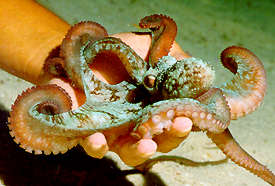
Buena Vista Point
Bacalar Chico
BELIZE HAS THE LARGEST BARRIER REEF IN THE WESTERN HEMISPHERE
|

|
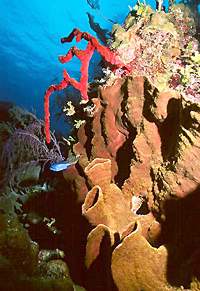



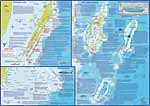
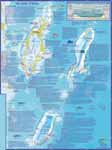


 Along Ambergris Caye, nurse sharks are probably more common than elsewhere
in Belize. Most often they are found sitting on the seabed amongst the
gullies and grottoes. Occasionally one can be seen swimming along the reef,
but it will quickly disappear when it sees a diver. It is a harmless shark
provided it is
left unmolested. But be forewarned: the nurse
shark is a stubborn creature and if it bites, it
has a reputation for not letting go!
Along Ambergris Caye, nurse sharks are probably more common than elsewhere
in Belize. Most often they are found sitting on the seabed amongst the
gullies and grottoes. Occasionally one can be seen swimming along the reef,
but it will quickly disappear when it sees a diver. It is a harmless shark
provided it is
left unmolested. But be forewarned: the nurse
shark is a stubborn creature and if it bites, it
has a reputation for not letting go!
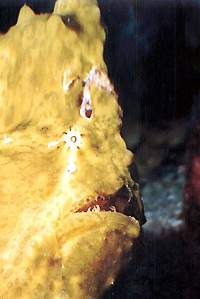



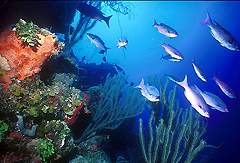
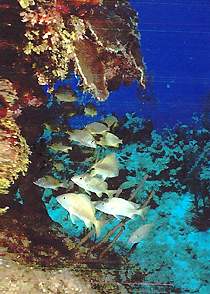 As with most dive sites near San Pedro, Tackle Box Canyons has a mooring buoy that provides dependable access to the rugged reef terrain on this part of the barrier. By following the narrow channel next to the mooring line seaward, you will come across a short tunnel decorated with sponges and other colorful encrusting organisms. Beyond it is a cavern with a gap in its roof, large enough for a diver to pass through.
As with most dive sites near San Pedro, Tackle Box Canyons has a mooring buoy that provides dependable access to the rugged reef terrain on this part of the barrier. By following the narrow channel next to the mooring line seaward, you will come across a short tunnel decorated with sponges and other colorful encrusting organisms. Beyond it is a cavern with a gap in its roof, large enough for a diver to pass through.
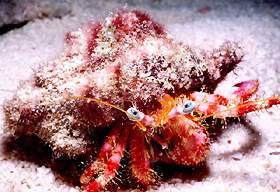
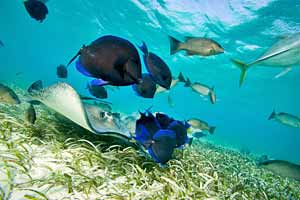
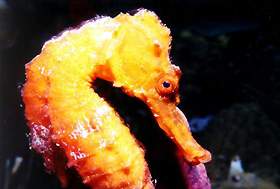 For divers who have just arrived at the island, this is a must stop for the first introductory
dive in Belizean waters. About 15 minutes south by boat. Maximum 30 feet deep. Excellent
visibility. Here the water lover can see a great number of Caribbean fish like snappers and groupers, parrotfish and surgeonfish. Rays are also often seen here together with the moray eels. Translated from the Mayan - Hol Chan means - little blue channel. You can almost always see eels, spider crabs, lobster, and nurse sharks. Divers are
occasionally cautioned regarding the currents and the DiveMaster has the final word on precautions
to be taken.
For divers who have just arrived at the island, this is a must stop for the first introductory
dive in Belizean waters. About 15 minutes south by boat. Maximum 30 feet deep. Excellent
visibility. Here the water lover can see a great number of Caribbean fish like snappers and groupers, parrotfish and surgeonfish. Rays are also often seen here together with the moray eels. Translated from the Mayan - Hol Chan means - little blue channel. You can almost always see eels, spider crabs, lobster, and nurse sharks. Divers are
occasionally cautioned regarding the currents and the DiveMaster has the final word on precautions
to be taken.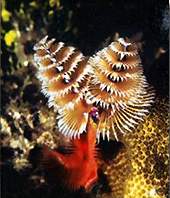 The cut is part of a 5 sq-mile marine sanctuary that includes the barrier reef, grass flats and mangrove areas. Entry into the park costs BZ$5. The fee helps cover park improvements, maintenance and enforcement costs. When Hol Chan attained park status, mooring buoys were installed and rangers began enforcing regulations to ban fishing and collecting of any type. All the attention is paying great dividends for divers, as marine life has increased dramatically,
making Hol Chan a big attraction.
The cut is part of a 5 sq-mile marine sanctuary that includes the barrier reef, grass flats and mangrove areas. Entry into the park costs BZ$5. The fee helps cover park improvements, maintenance and enforcement costs. When Hol Chan attained park status, mooring buoys were installed and rangers began enforcing regulations to ban fishing and collecting of any type. All the attention is paying great dividends for divers, as marine life has increased dramatically,
making Hol Chan a big attraction.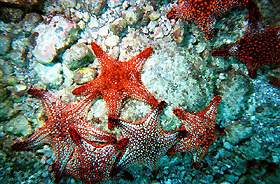 The Channel itself is about 30 ft (9 meters) deep, with occasionally strong tidal currents. The reef rises to the surface, bristling with corals, sponges, crabs, eels and hundreds of fish species. Night divers glimpse flaming scallops, octopus, and lobsters. Advanced divers drop into the reef's deep crevices, then wind their way to the outside dropoff that is full of corals and gorgonians.
The Channel itself is about 30 ft (9 meters) deep, with occasionally strong tidal currents. The reef rises to the surface, bristling with corals, sponges, crabs, eels and hundreds of fish species. Night divers glimpse flaming scallops, octopus, and lobsters. Advanced divers drop into the reef's deep crevices, then wind their way to the outside dropoff that is full of corals and gorgonians.
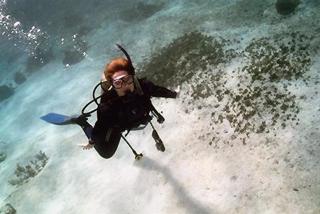
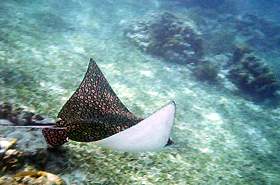 Although the reef is not as magnificent as the barrier, the scattered coral heads and marine life make impressive wide angle and macro subjects. Truck size colonies of boulder coral 10-12 ft high nearly reach the surface and provide refuge to a variety of marine life. Flame scallops, anemones, tube worm shrimp and eels shelter in the coral nooks and crannies. Sea fans, azure vase sponges, butterflyfish and wrasses acid additional life and color. Bluestriped grunts especially like the soft coral stands or open sand areas and seek shelter among the tangy branches when approaching. Be sure not to pass up the sand flats for macro possibilities. You need to get right
down on the sand to see tiny mysid shrimp, hermit crabs and clams. A little detective work will reward you with burrowed urchins, brittle starfish and other organisms that shelter or feed in the sediment.
Although the reef is not as magnificent as the barrier, the scattered coral heads and marine life make impressive wide angle and macro subjects. Truck size colonies of boulder coral 10-12 ft high nearly reach the surface and provide refuge to a variety of marine life. Flame scallops, anemones, tube worm shrimp and eels shelter in the coral nooks and crannies. Sea fans, azure vase sponges, butterflyfish and wrasses acid additional life and color. Bluestriped grunts especially like the soft coral stands or open sand areas and seek shelter among the tangy branches when approaching. Be sure not to pass up the sand flats for macro possibilities. You need to get right
down on the sand to see tiny mysid shrimp, hermit crabs and clams. A little detective work will reward you with burrowed urchins, brittle starfish and other organisms that shelter or feed in the sediment.
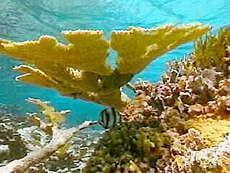 SANDBAR
SANDBAR 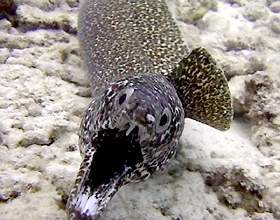 PUNTA ARENA CANYONS (Small Cut)
PUNTA ARENA CANYONS (Small Cut)
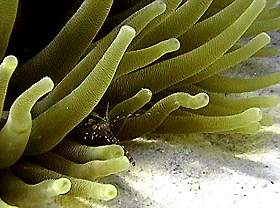 MATA CUT
MATA CUT SHARK RAY ALLEY
SHARK RAY ALLEY Renegades
Renegades
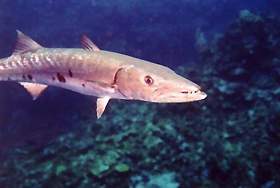 Mahogany
Mahogany
 Pillar Coral
Pillar Coral
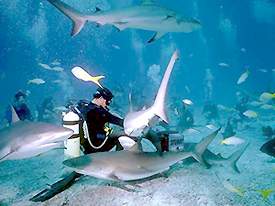 Grouper Interaction A dozen or so large black and Nassau grouper call the Pillars dive site home. They'll greet you shortly after entry and follow you down to the reef. Some will even settle to the
bottom with you for a face-to-face interaction. They prefer not to be touched, but do not mind being photographed or looked over, a foot away from your mask. While occasional close encounters with large grouper took place here for years, fish feeding by local guides now make them a regular occurrence. You can expect to see
grouper, snapper and jacks swim up to you because they've learned to identify all divers as a source of food. It is a good idea to keep hands close to your body when surrounded by hungry fish since waving fingers may be mistaken as a meal. The marine reserve does not advocate fish feeding by guides or visitors.
Grouper Interaction A dozen or so large black and Nassau grouper call the Pillars dive site home. They'll greet you shortly after entry and follow you down to the reef. Some will even settle to the
bottom with you for a face-to-face interaction. They prefer not to be touched, but do not mind being photographed or looked over, a foot away from your mask. While occasional close encounters with large grouper took place here for years, fish feeding by local guides now make them a regular occurrence. You can expect to see
grouper, snapper and jacks swim up to you because they've learned to identify all divers as a source of food. It is a good idea to keep hands close to your body when surrounded by hungry fish since waving fingers may be mistaken as a meal. The marine reserve does not advocate fish feeding by guides or visitors.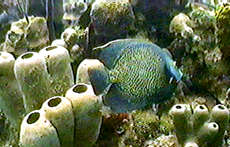
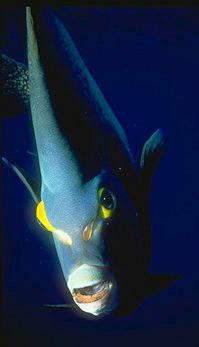 Eagle Ray Canyon
Eagle Ray Canyon